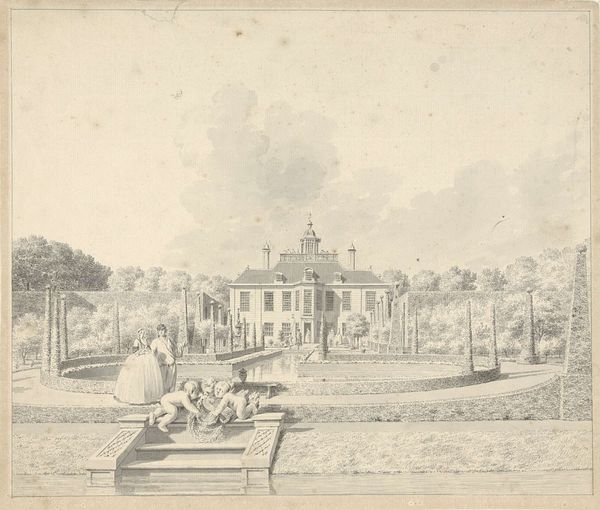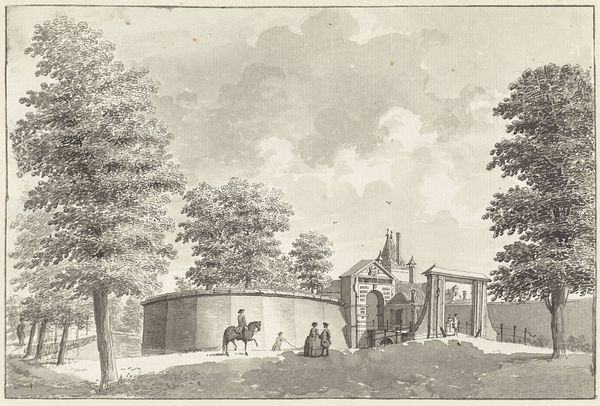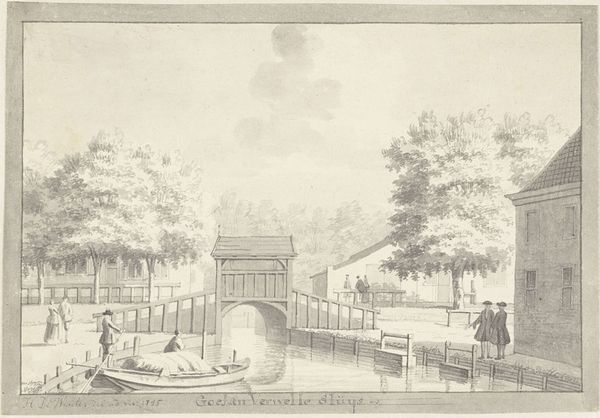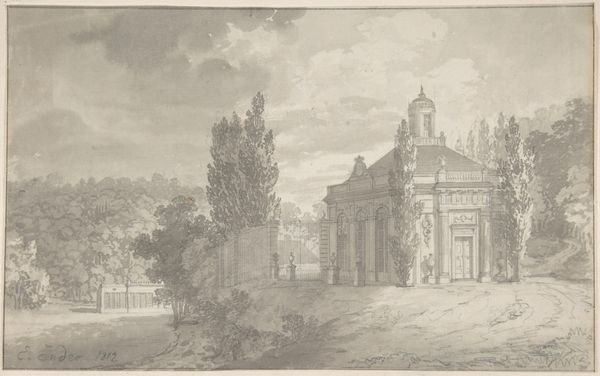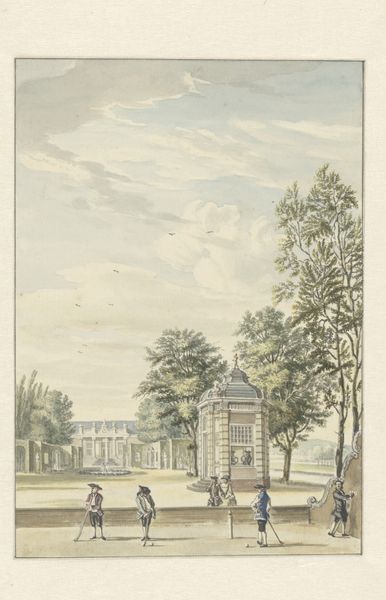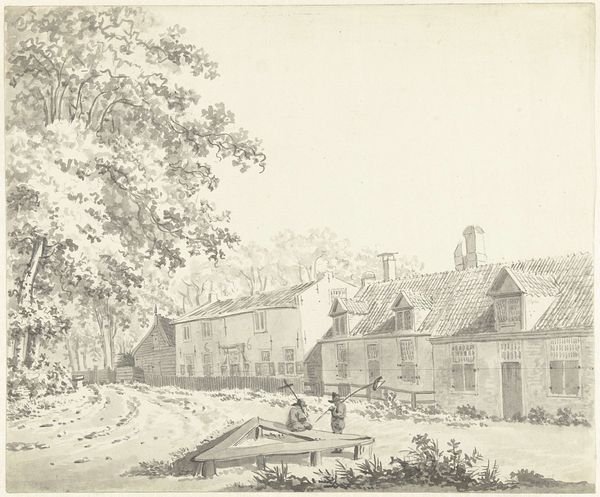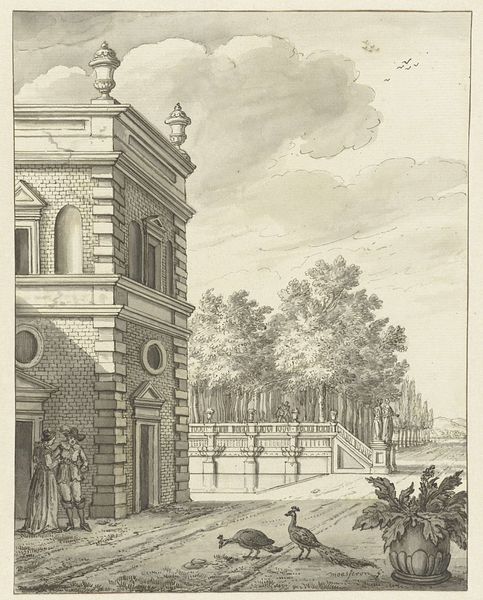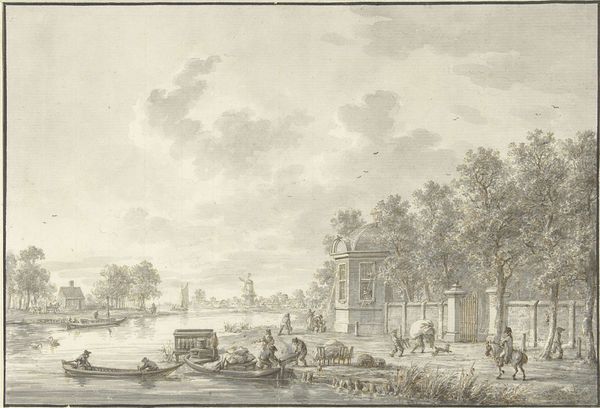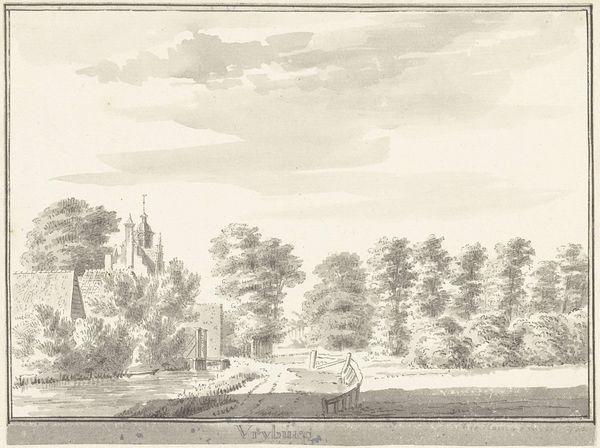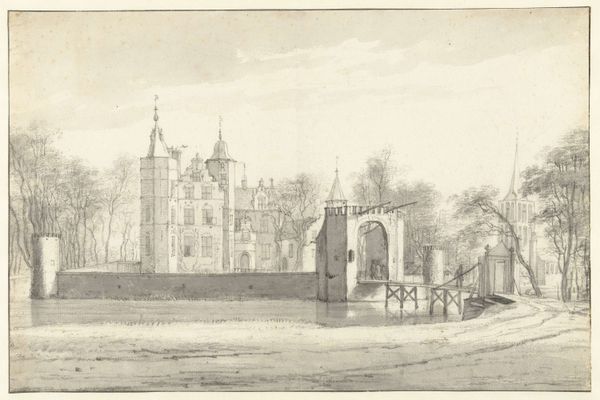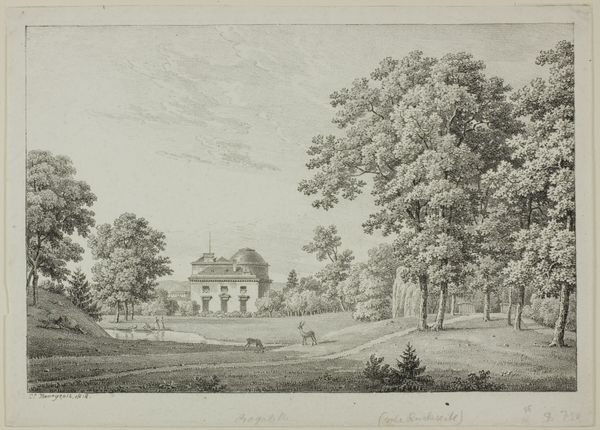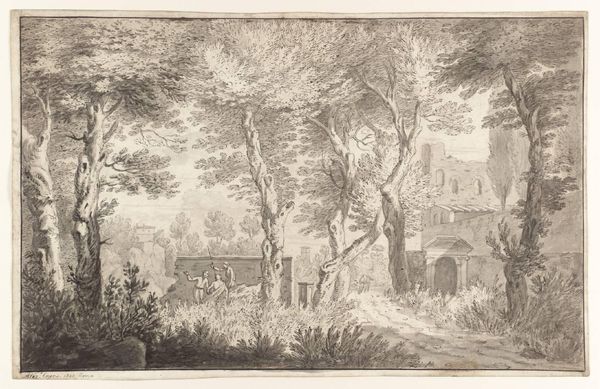
Het huis Spieringshoek tussen Schiedam en Vlaardingen; de voorgevel c. 1750
0:00
0:00
drawing, paper, pen
#
drawing
#
landscape
#
paper
#
classicism
#
pen
#
cityscape
#
genre-painting
#
rococo
Dimensions: height 328 mm, width 384 mm, height 293 mm, width 348 mm
Copyright: Rijks Museum: Open Domain
Curator: Here we have Cornelis Pronk’s drawing, “Het huis Spieringshoek tussen Schiedam en Vlaardingen; de voorgevel,” created around 1750. It's a pen drawing in gray ink, on paper, currently held at the Rijksmuseum. Editor: My first thought is of order, control even. It's such a carefully composed view. The house seems to survey its manicured grounds with a distinct air of self-importance. Curator: Yes, consider how Pronk renders the architecture. Look at the lines defining the facade, the crisp geometry of the windows and roof. This meticulous detail reflects the values of the elite class that commissioned such works. Editor: Precisely. And it speaks to the social stratification inherent in these depictions of country estates. We see the owners leisurely positioned on the steps, figures rendered to accentuate their dominance within this controlled landscape, even playfully commanding the scene with animals. It’s a narrative of power expressed through ownership. Curator: It's also interesting to consider Pronk's method. The medium, pen and ink on paper, signifies a level of planning and precision. There are few revisions; the strokes suggest that the work itself represents a statement on behalf of the house. Editor: But what is absent is also important: signs of labor. These vast lawns and meticulously designed walls had a massive, hidden workforce behind them to uphold that sense of leisure that is displayed. How complicit is Pronk by choosing only to represent wealth in its most aestheticized form? Curator: Certainly, the drawing invites that interrogation. But I would also argue that it is important to appreciate how this relates to the consumer culture of the time. These drawings were a means by which wealthy individuals affirmed their status, as commissions also helped in the business of producing images and circulating the representation of ownership. Editor: So, we can acknowledge its function as both an artwork, yes, and a cog in the perpetuation of socioeconomic inequalities. It makes one ponder how the narrative of property continues to influence art today. Curator: I agree. The legacy of representations like these remains a relevant point of reference when considering contemporary social values and class structure. Editor: Well, contemplating Pronk’s drawing certainly offers a lens through which to reflect on the interplay of power, material, and artistic expression, even now.
Comments
No comments
Be the first to comment and join the conversation on the ultimate creative platform.
